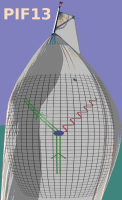-
Strong field QED/QFT
Theoretical developments in QED, or more generally QFT, involving interactions with strong external fields
What are the links between QED in curved spacetime and QED in strong fields?
-
Strong field collider phenomenology
Calculations in strong fields present at collider interaction points
How do we perform Furry picture calculations in the intense fields of overlapping intense charge bunches at the IP of a collider?"
What is the effect on the Beamstrahlung spectrum and radiation angle of including exact solutions in the strong fields of the both colliding charge bunches at a linear collider
-
Ultra-intense LASERS
Studies involving strong fields from LASERS
The advent of new ultra-intense LASER facilties in Europe such as XFEL and ELI has prompted a great deal of theoretical work<\p>
LASER-plasma acceleration involves physics processes in strong intra-plasma electric fields and the strong circularly or linearly polarised fields of at least one impinging LASER
-
Strong fields in crystals
Theory and experiment in crystalline, inter-lattice strong fields.
Supposing one would be able to generate 4 TeV electrons from an extracted LHC beam (as under development in the AFTER@LHC project): Would the accessible region of the strong-field parameter (chi or Upsilon, usually) of the order 100 in crystals open a new regime (inspired by the classical critical field being 137 times larger than the quantum version)), or would it be merely a continuation of the behavior that is already known?
In the newly established experiment E-212 at SLAC, we aim to address the question of lasing in the MeV regime, by means of strong field interactions in crystals. Theory has so far only been developed in the case of non-relativistic transverse motion, and predicts that we will not be successful. What happens when relativistic transverse motion (which is relevant) is treated?
Is it possible to measure the process of photon splitting in the strong field regime, e.g. in crystals?"
-
Heavy ion collisions
Strong field physics in heavy ion collisions and/or quark-gluon plasmas
-
Numerical calculations and Simulations
Simulations of strong field phenomena
-
Axion-like physics
-
Schwinger mechanism
Studies involving the Schwinger mechanism
-
Unruh radiation
Studies involving Unruh radiation
-
Magnetars
Strong fields present in astrophysical objects
-
Other Strong field studies
Strong field studies which do not fit the above descriptions
Choose timezone
Your profile timezone:

